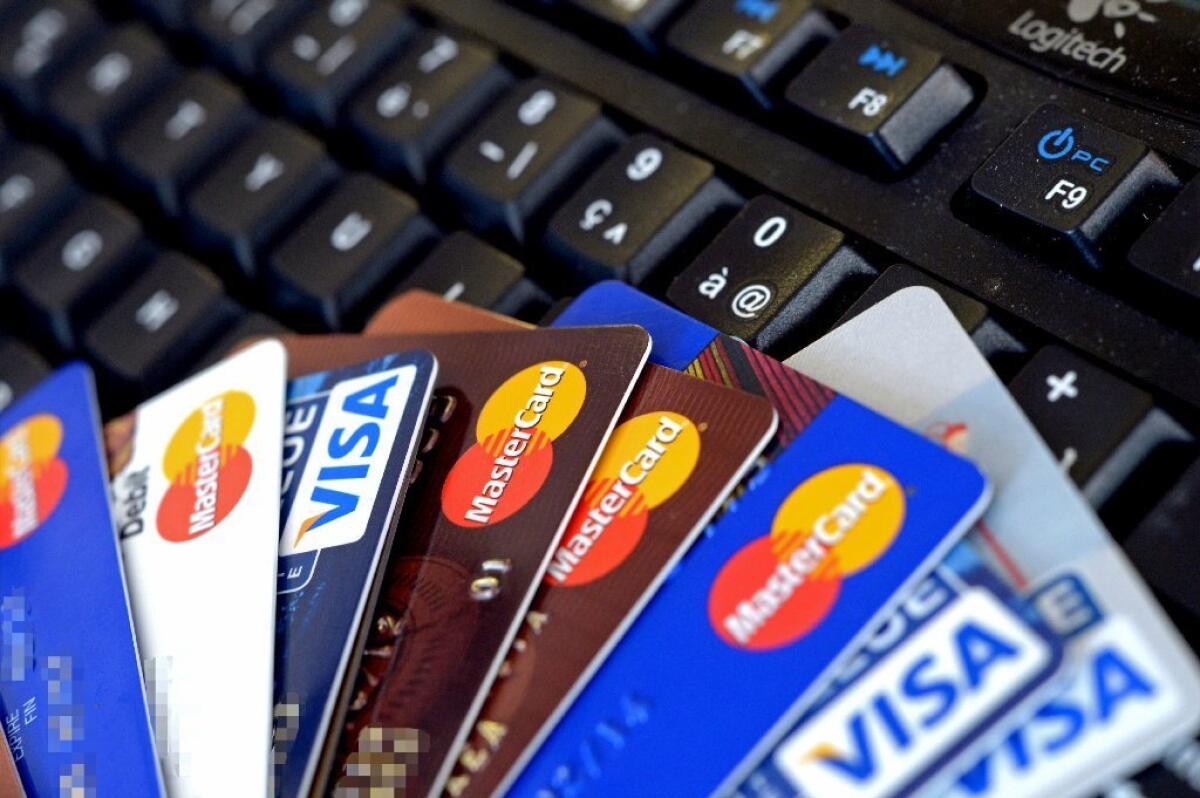Credit cards: the good, the bad and the subprime lender with 12 fees

A survey of 100 credit cards found that they averaged six types of fees each. But the range was big: from zero fees to 12.
If you ever needed proof of the punishment accorded borrowers who fail to pay their debts, a new credit-card survey should fit the bill.
The average credit card carries six different fees, according to the review released Thursday by CreditCards.com.
The online personal-finance site said issuers “are showing an ever-increasing appetite for fees.”
But six fees pale compared to the 12 imposed by each of two cards issued by First Premier Bank in Sioux Falls, S.D. The cards ostensibly are designed to help subprime borrowers recover from their financial difficulties.
On one card, for example, First Premier cardholders start out with low borrowing limits, typically $300, which can be raised if they make payments on time. But when they are granted higher credit, they are socked automatically with a $25 charge, according to CreditCards.com.
First Premier Bank could not be immediately reached for comment.
At the other end of the spectrum was the PenFed Promise Visa card. Of the 100 cards in the survey, only the PenFed Promise carried no fees. The card doesn’t even charge fees for cash advances or late payments, according to the survey.
The card is issued by the Pentagon Federal Credit Union, which, like a lot of credit unions these days, opens memberships to a wide range of consumers and their relatives.
Those eligible for PenFed cards include people in military and government service, veterans, members of various organizations, such as the Red Cross and the Coast Guard Auxiliary, and workers at certain military bases.
Among the other CreditCards.com survey findings:
— Only 25 cards charge an annual fee, and 10 of those waive the fee for the first year.
— Ninety-nine cards charge a late payment fee, which typically runs up to $35.
— All but two cards charge cash advance fees, and 90% of the cards charge fees for balance transfers.
— More than three-quarters of the cards charge foreign transaction fees, typically 3% per transaction.
The charges fall into two main categories: penalty fees and transactional fees.
“Penalty fees are pretty easy to avoid, for example, by paying your bills on time,” said Matt Schulz, CreditCards.com’s senior industry analyst.
“Transactional fees are more important to comparison-shop,” Schulz said. “If you travel internationally a lot, a credit card that doesn’t charge foreign transaction fees is a great value.”
Follow @ScottReckard for news of banks and home loans.







